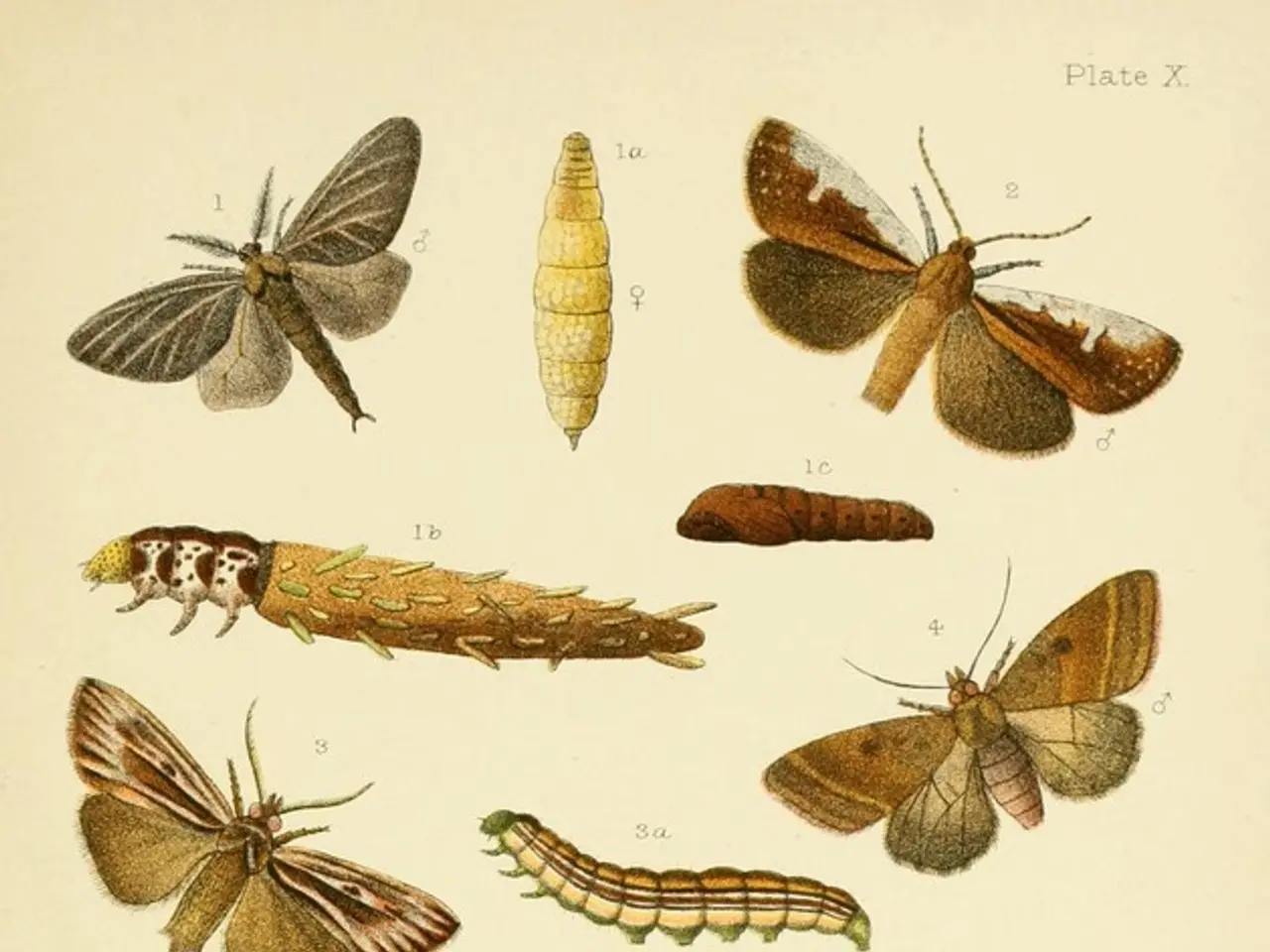Identifying and Managing Western Tent Caterpillars: A Guide
In the western United States, a common pest that can cause significant damage to trees and shrubs is the Western Tent Caterpillar. This insect, known for its distinctive silk tents, can lead to defoliation of plants, resulting in branch dieback, top-kill, reduced fruit set, or reduced growth.
The life cycle of the Western Tent Caterpillar begins with the eggs, which overwinter on tree branches. In early spring, these eggs hatch into larvae that develop through five to eight instar (larval) stages over approximately four to seven weeks. During this period, the caterpillars live gregariously in tents made of silk spun on tree branches.
As the caterpillars grow, their tents expand. In later larval stages, the caterpillars become solitary before pupating inside silken cocoons found in crevices or on the ground. Adult moths emerge in late spring to early summer, typically black to grayish in colour.
Natural predators of Western Tent Caterpillars include various birds, such as American Goldfinches, which are known to feed on the caterpillars found in tent nests. Insect predators and parasitoids also likely play a role, though specific predators for Western Tent Caterpillars are less detailed in the available sources. Other general insect predators include wasps and robber flies, which may prey on caterpillars or related insects.
For homeowners and gardeners, control methods generally focus on physical removal of tents before larvae disperse, as well as targeted use of insecticides. Encouraging natural predators like birds can also aid in population control. Because caterpillars pupate in soil or crevices, disrupting or removing cocoons can help reduce numbers the following year. Maintaining tree health can also limit damage from infestations.
For more information on controlling Western Tent Caterpillars, contact your local extension office or forest entomology department. In cases of larger scale infestations, such as in an orchard, chemical insecticides may be used, or the biological insecticide Bacillus thuringiensis.
It's important to note that a virus is known to infect the larvae of the Western Tent Caterpillar and can quell outbreaks. Western Tent Caterpillar infestations are often allowed to run their course unchecked, but if they affect fruit trees or timber production, alternative controls may be used.
The Western Tent Caterpillar's hosts include a variety of broadleaf trees and shrubs, such as quaking aspen, cottonwoods, red alder, crabapple, ash, birch, hazel, hawthorne, madrone, oak, willow, chokecherry, bitterbush, mountain mahogany, ninebark, sumac, wild currant, wild rose, and various fruit trees. Most larvae have a blue head and body dotted with black markings, and the entirety of the larva is covered in white-tipped orange/brown hairs.
The Western Tent Caterpillar is found throughout most of the western United States, up into southern Canada, and down into areas of northern Mexico. Damage caused by the larvae of the Western Tent Caterpillar can be devastating, leading to defoliation or even deforestation of thousands of acres of forest tree hosts.
In conclusion, understanding the life cycle and natural predators of the Western Tent Caterpillar can help homeowners and gardeners take proactive steps to manage this pest. By removing tents, encouraging natural predators, and maintaining tree health, the impact of Western Tent Caterpillars can be minimised. For larger infestations, it's recommended to consult with local extension offices or forest entomology departments for guidance on appropriate control methods.
The life cycle of the Western Tent Caterpillar, a common pest found in home-and-garden settings, impacts the growth and health of various broadleaf trees and shrubs, making gardening more challenging. In order to protect plants and minimize damage, homeowners and gardeners can adopt proactive measures such as physical removal of tents, encouraging natural predators, and maintaining tree health.




